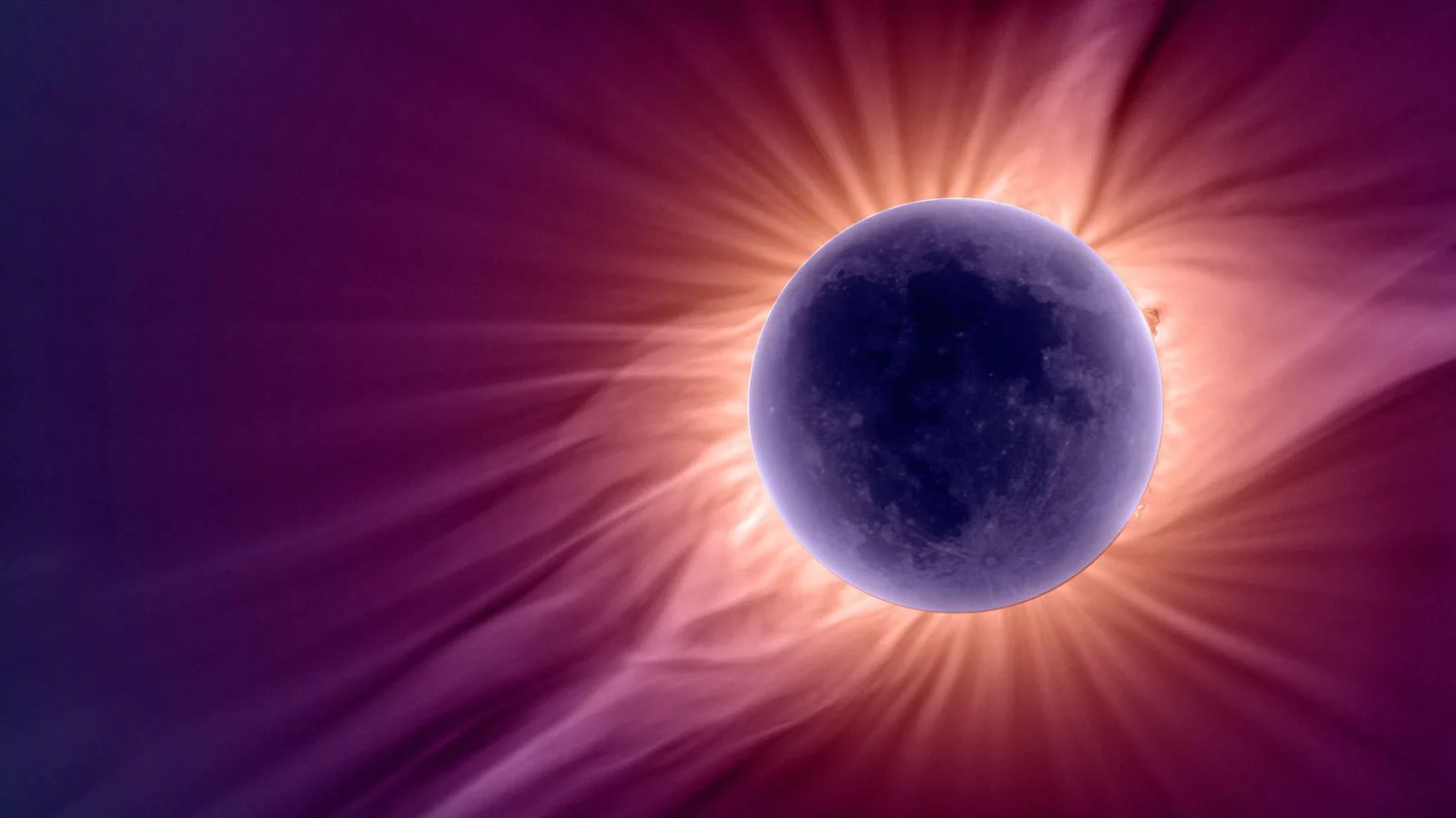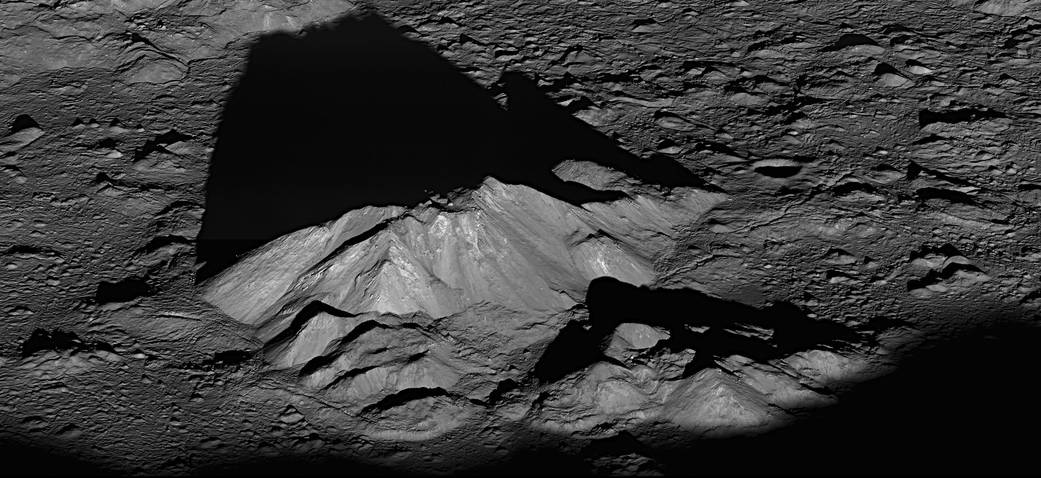What is an “almost total” lunar eclipse?
A lunar eclipse occurs when the Sun, Earth, and Moon align so that the Moon passes into Earth’s shadow. In a total lunar eclipse, the entire Moon falls within the darkest part of Earth’s shadow, called the umbra. In this eclipse, up to 99.1% of the Moon’s disk will be within Earth’s umbra.
How can I observe the eclipse?
The best viewing will be right around the peak of the eclipse, on November 19th at 9:03 UTC/4:03 AM EST/1:03 AM PST. This part of the eclipse is visible in all of North America, as well as large parts of South America, Polynesia, eastern Australia, and northeastern Asia.
What can I expect to observe?
All times are on November 19, 2021 except where noted.
| UTC | EST | PST | ||
| 6:02 | 1:02 am | 10:02 pm (Nov. 18) | Penumbral eclipse begins | The Moon enters the Earth’s penumbra, the outer part of the shadow. The Moon begins to dim, but the effect is quite subtle. |
| 7:19 | 2:19 am | 11:19 pm (Nov. 18) | Partial eclipse begins | The Moon begins to enter Earth’s umbra and the partial eclipse begins. To the naked eye, as the Moon moves into the umbra, it looks like a bite is being taken out of the lunar disk. The part of the Moon inside the umbra will appear very dark. |
| 8:45 | 3:45 am | 12:45 am (Nov. 19) | Red color becomes visible | More than 95% of the Moon’s disk is in the umbra and the Moon will appear red. The color might be easier to see in binoculars or a telescope. Using a camera on a tripod with exposures of several seconds will bring out the color, at the expense of overexposing the lit part of the Moon. |
| 9:03 | 4:03 am | 1:03 am | Eclipse peak | The peak of the eclipse occurs at 9:03 UTC. This is the best time to see the red color. |
| 9:20 | 4:20 am | 1:20 am | Red color no longer visible | The redness fades as less than 95% of the Moon is in the Earth’s umbra. It appears that a bite is taken out of the opposite side of the Moon from earlier. |
| 10:47 | 5:47 am | 2:47 am | Partial eclipse ends | The whole Moon is in Earth’s penumbra, but again, the dimming is subtle. |
| 12:04 | 7:04 am | 4:04 am | Penumbral eclipse ends | The eclipse is over. |
Is this the longest lunar eclipse of the century?
Kind of. It’s actually the longest partial lunar eclipse in a millennium, clocking in at 3 hours, 28 minutes and 23 seconds. There hasn’t been a longer partial lunar eclipse since February 18, 1440 (3 hours, 28 minutes, 46 seconds) and it will remain the longest partial lunar eclipse for 648 years until February 8, 2669 (3 hours, 30 minutes, and 2 seconds). There will be a longertotal lunar eclipse on November 8, 2022.
- Partial lunar eclipse of February 18, 1440: 3:28:46
- Partial lunar eclipse of November 18/19, 2021: 3:28:23
- Partial lunar eclipse of February 8, 2669, 3:30:02
Why is this eclipse so long?
This is a long eclipse for two main reasons: 1) The Moon’s orbital speed and 2) The near-totality of the eclipse.
First, the Moon’s orbit around the Earth is not a perfect circle, and the Earth is off-center within the orbit so sometimes the Moon is closer to the Earth and sometimes it is farther away. This change in distance impacts the Moon’s orbital speed. Closer to the Earth, the Moon moves faster, while further away, it travels more slowly. Right now, the Moon is near its farthest point in its orbit around the Earth and thus, moves slowly through Earth’s shadow.
Second, since this eclipse is almost-total, the Moon spends a longer amount of time in the Earth’s umbra than it would in a ‘more-partial’ eclipse.
What else can I see tonight?
During the eclipse, the Moon moves through the western part of the constellation Taurus. The Pleiades star cluster is to the upper right, and the Hyades cluster ― including the bright star Aldebaran, eye of the bull ― is in the lower left. Here are some more skywatching tips for the month of November.
Why does the Moon turn red during a lunar eclipse?
The same phenomenon that makes our sky blue and our sunsets red causes the Moon to turn red during a lunar eclipse. It’s called Rayleigh scattering. Light travels in waves, and different colors of light have different physical properties. Blue light has a shorter wavelength and is scattered more easily by particles in Earth’s atmosphere than red light, which has a longer wavelength. Red light, on the other hand, travels more directly through the atmosphere. When the Sun is overhead, we see blue light throughout the sky. But when the Sun is setting, sunlight must pass through more atmosphere and travel farther before reaching our eyes. The blue light from the Sun scatters away, and longer-wavelength red, orange, and yellow light passes through.
During a lunar eclipse, the Moon turns red because the only sunlight reaching the Moon passes through Earth’s atmosphere. The more dust or clouds in Earth’s atmosphere during the eclipse, the redder the Moon will appear. It’s as if all the world’s sunrises and sunsets are projected onto the Moon.



































